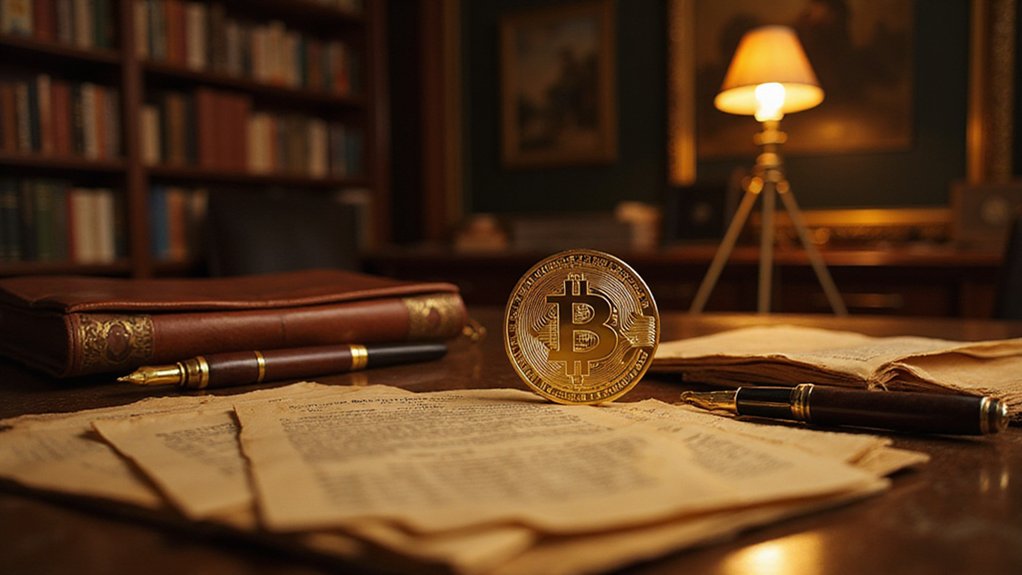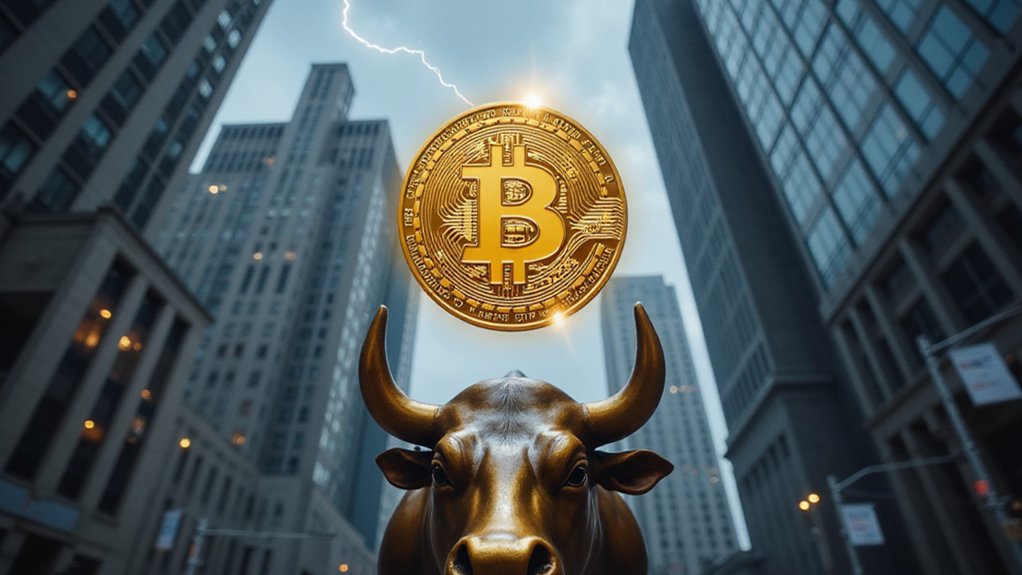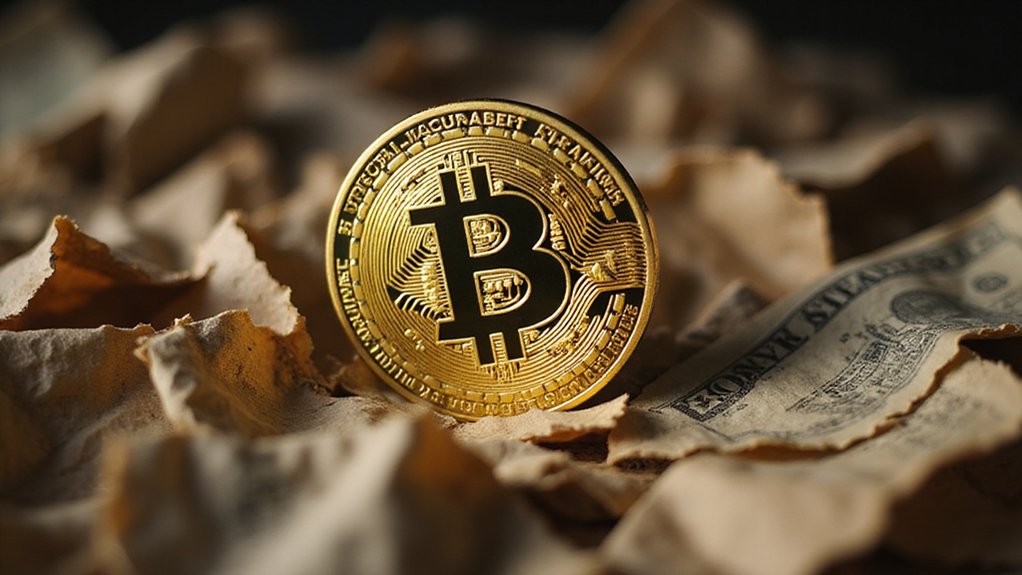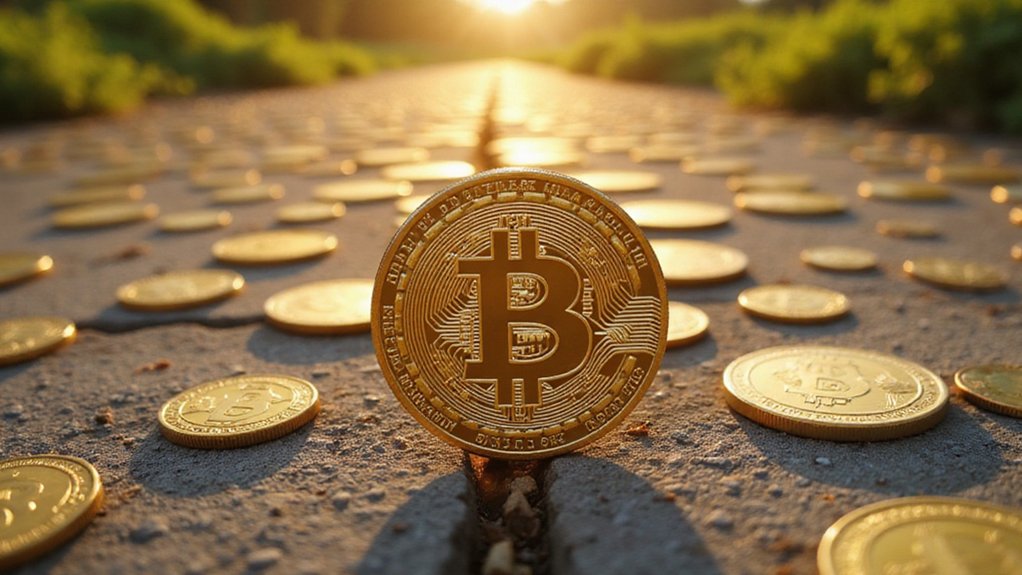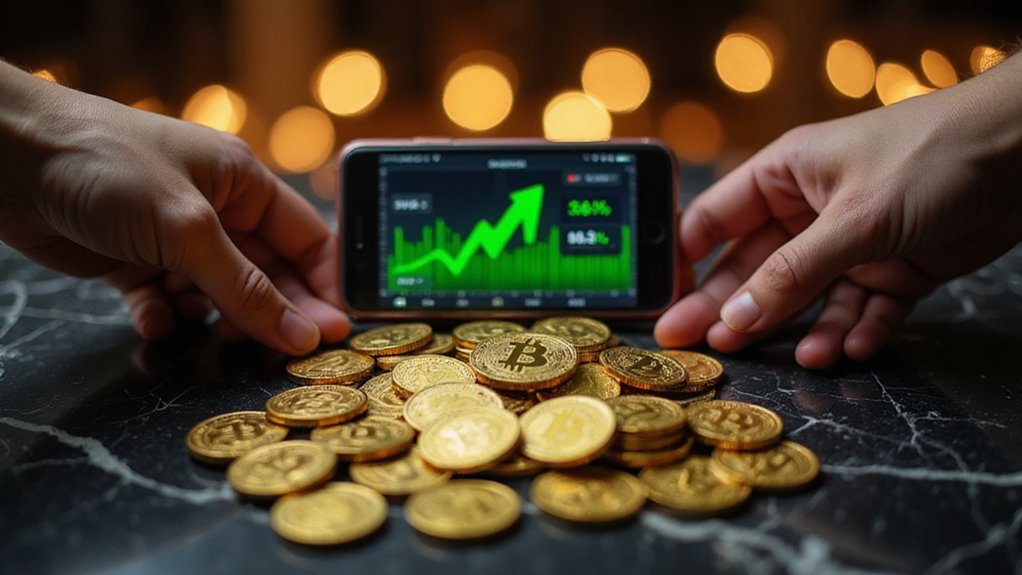While the cryptocurrency evangelists continue proclaiming Bitcoin’s democratizing potential, the mathematics of ownership in 2025 tell a rather different story—one where possessing an entire Bitcoin has become a distinguishing marker of financial commitment that separates the casual dabbler from the true believer.
The raw statistics reveal Bitcoin’s transformation into something approaching digital aristocracy. With approximately 4% of the global population owning Bitcoin directly, and the average holder possessing merely 0.57 BTC, the full-coin owner represents an increasingly rarefied breed. Only 0.18% of cryptocurrency owners—a fraction of a fraction—hold one complete Bitcoin or more, creating an exclusive club that would make country club membership seem positively egalitarian.
Bitcoin ownership has crystallized into digital aristocracy, where possessing one full coin marks entry into an increasingly exclusive financial elite.
This scarcity stems from fundamental supply constraints that even first-year economics students could predict. Of Bitcoin’s 21 million coin maximum, more than 19.8 million have already been mined, leaving fewer than 1.2 million tokens for future generations. The remaining coins enter circulation through miners who solve complex mathematical puzzles and earn Bitcoin rewards, though mining pools like F2Pool and Antpool now dominate this process rather than individual participants. Factor in the estimated millions of coins lost to forgotten passwords, hardware failures, and Satoshi Nakamoto’s dormant 968,452 BTC stash, and the available supply shrinks further still.
Meanwhile, institutional appetite has fundamentally altered the ownership landscape. MicroStrategy’s 580,250 BTC holdings and the emergence of spot ETFs have created powerful vacuum effects, absorbing supply that previously might have trickled down to individual investors. The United States government alone controls 207,189 BTC—presumably not acquired through dollar-cost averaging strategies.
The demographic reality proves equally illuminating. Vietnam leads global adoption at 21.19% of its population, while 28% of American adults own some cryptocurrency. Yet these impressive penetration rates mask the concentration problem: most participants hold fragmentary amounts that wouldn’t register as meaningful positions in traditional asset classes. The ownership distribution reveals that whales holding over 10,000 BTC reduced their holdings from 15.0% to 14.7%, yet still maintain outsized influence over the market.
Perhaps most tellingly, 14% of non-owners express intentions to enter the market, suggesting demand pressures will only intensify as supply dwindles. The mathematics seem almost cruelly precise—as Bitcoin approaches mainstream acceptance, the very scarcity that drives its value proposition guarantees that whole-coin ownership becomes increasingly exclusive.
What began as a democratic alternative to traditional finance has evolved into its own form of stratified wealth distribution, complete with whales, institutions, and the vast majority holding digital crumbs.
